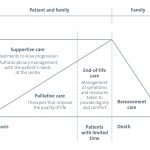15 for 15: a challenge of epic proportions!

You may remember reading all about Adam Parsons’ incredible challenges in a past issue of our Logbook; raising close to £1,700 through his Runaway challenge, and reinterpreting the brainstrust Run, Row, Ride challenge to do 30 miles of rowing, 30 miles of running, and 30 miles of cycling, in less than 24 hours. All in loving tribute to his wife Jenna.
Well, Adam hasn’t stopped there, and in May he raised £1,519.98 for brainstrust through donations he received from his appearances on the live streaming platform Twitch where he discussed mental health.
For September Adam had a new challenge; his ’15 for 15′. Fundraising to mark brainstrust‘s fifteenth year by running an epic 15 marathons over 15 consecutive days!
An incredible achievement
Adam warmed up for his first marathon by running the half marathon at the Great North Run (12 September), and he has just completed his ’15 for 15′ challenge with the London Marathon on 3 October.

Adam has run a range of different routes and terrains, and in almost all weathers to complete the 15. Day 14 saw Adam run the entire distance in heavy rain, but none was harder than running on the sand in Norfolk resulting in some painful blisters! Adam has said Day 2 was probably the easiest, not least because it was early on in the challenge, but also because the route he took, a cycle path from Canterbury to Whitstable back and forth. His favourite of the 15 to complete was the London Marathon; the most emotional for him. Adam still wears his wedding ring with love which has been fused with Jenna’s, and contains some of her ashes, but also a favourite because of the atmosphere. The queues for the toilets also resulted in a surprise donation of $100 from someone Adam got talking to about his challenge!
Adam’s awe-inspiring dedication will also see him run the Lincoln 10k and the Cambridge half marathon to see out the year, and he’s got the Edinburgh Marathon already in his diary for 2022.
We thank you, Adam, for your immeasurable support!
Adam’s fundraising page can be found here – if you’d like to show your support for his challenge click here!









